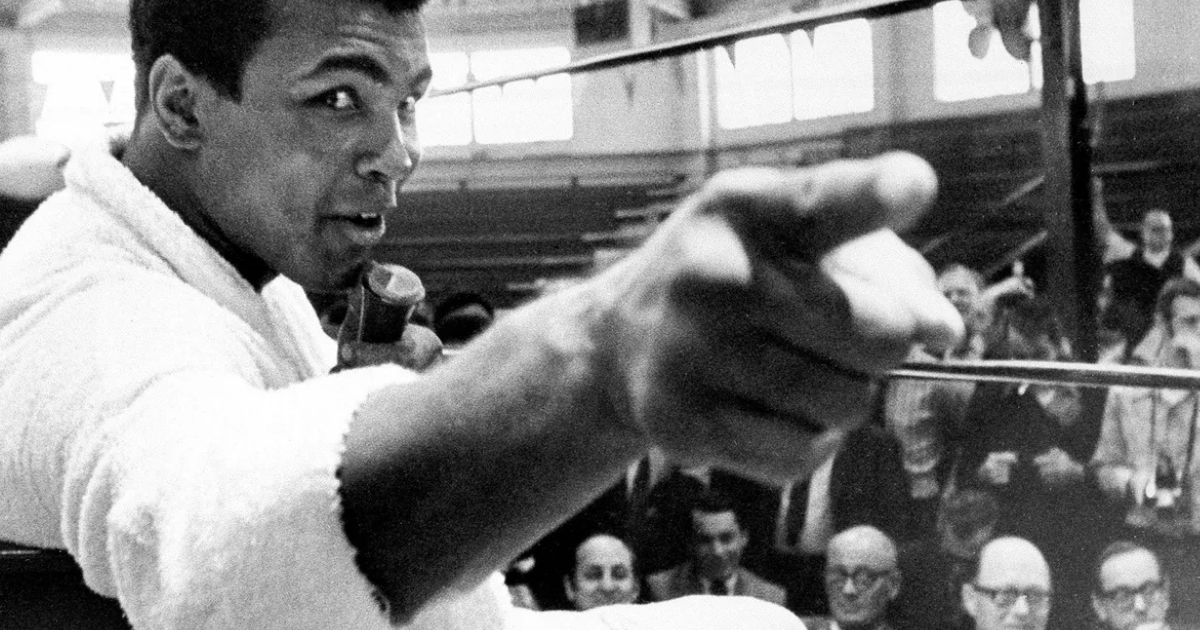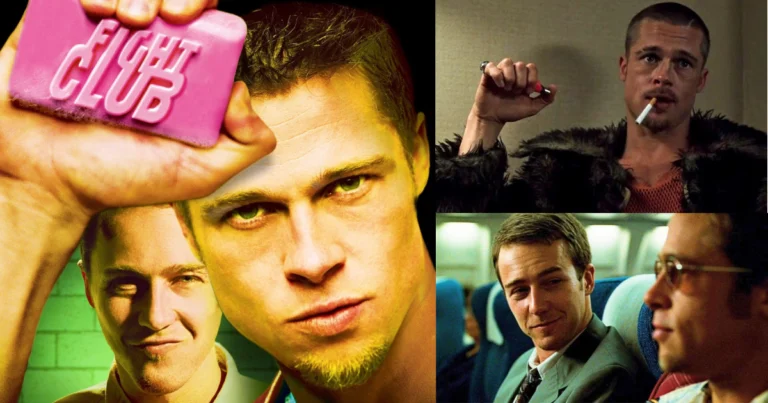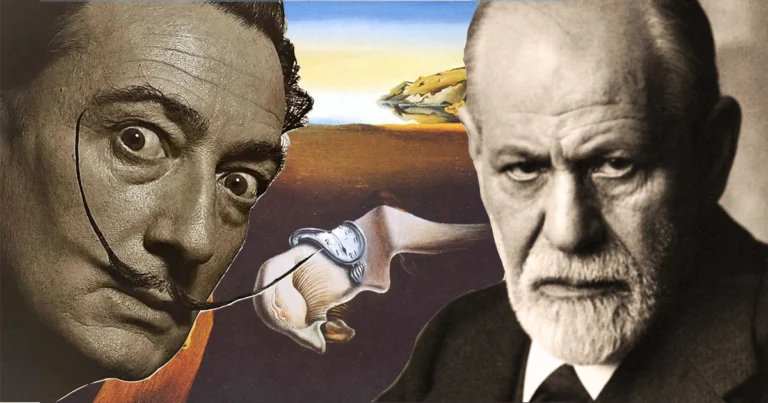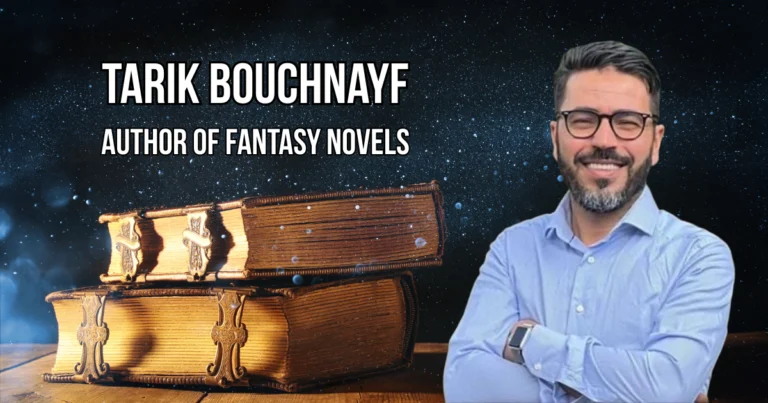Mohamed Ali : Float like a butterfly, sting like a bee
My doctor says it’s okay to exercise, but when it becomes a strain, you better quit.
Mohamed Ali :
Man, your doctor don’t know what he’s talking about.
That’s what you want to do, strain.
You want to run into the pains.
You want to run until your throat feels like sandpaper.
You want to run until it feels like you’re going to throw up.
You want to keep running until your legs are pained, until you’re going to die, you’re going to fall out.
You got to run until your stomach feels like it’s going to burst, until your heart stops pounding.
You want to quit.
It feels like you can’t go another inch.
You can’t go another step, but you keep going.
What kind of man is that?
You should just go until you want to fall out in your tracks.
And then after that, you’ve only gotten about halfway through because, come on, man.
The inner fire: The making of an exceptional mental force
Louisville, Kentucky. A twelve-year-old Black boy has his bicycle stolen. Crying, he runs to a local police officer, who tells him, “You’d better learn to fight before trying to get it back.” The words seem ordinary, almost dismissive, but they ignite something profound. That boy’s name is Cassius Clay, and in that moment, he decides he will become unbeatable.
It isn’t rage that drives him. Nor is it revenge. It’s something deeper, an inner necessity to reclaim control. In 1950s segregated America, a young Black boy learns early that physical strength alone won’t be enough. One must find other ways to exist, through voice, presence, and the refusal to bow.
Even as a child, Ali develops a kind of vital pride, an ego that isn’t hollow but protective. It’s not arrogance; it’s a psychological shield, a survival strategy. He talks a lot. He asserts himself. He already claims to be “the greatest”, not to dominate others, but to avoid being dominated. Where others stay quiet to remain invisible, he makes himself seen so he can never be erased.
Behind this fire burns a fierce discipline. As a teenager, he embraces an almost monastic training regimen. His body becomes armor, but his mind, his mind becomes a temple. He learns to absorb blows, to turn exhaustion into energy, humiliation into motivation. Through boxing, he discovers a truth he will carry with him forever: pain is not a barrier; it is a passage.
The psychological fight: Body on stage, mind at war
Muhammad Ali didn’t strike only with his fists. He struck before the first bell, in different ways, in different spaces. The moment he entered a room, the fight had already begun. Press conferences, weigh-ins, even a simple glance, all became battlegrounds for psychological warfare. Ali didn’t just prepare himself, he dismantled the other. He wasn’t a typical athlete; he was a master of orchestrating doubt.
It wasn’t empty provocation. It was cognitive strategy. He knew that fear distorts perception, that anger clouds judgment, that wounded pride leads to rash decisions. So he aimed there, at the opponent’s ego, at his self-image. Through words, “I am the greatest!”, he wasn’t trying to convince the world, but to fracture his opponent’s inner silence, forcing him to think of Ali instead of the fight.
Ali understood that combat is ultimately a war of narratives. If you step into the ring believing your own story, you stand. But if the other believes his more strongly, if his narrative takes over yours, you fall. He wasn’t facing a man, he was facing the doubt inside that man, and he knew how to amplify it.
His boxing style, built on evasion and fluidity, reflected this mental choreography. It wasn’t brute force, it was rhythm, patience, and strategic delay. What sports analysts would later call “ring IQ,” Ali invented with his body. He turned the ring into a psychological arena, forcing his opponents to chase him, search for him, lose themselves.
And then there was the phrase that transcended decades:
“Float like a butterfly, sting like a bee.”
It was more than a style, it was a philosophy of confrontation. Be elusive, light in movement, airy as breath. But strike with precision, at the exact moment when the body opens, when the mind wavers. Never be where they expect you. Ali danced, but the dance was a trap. He wasn’t fleeing; he was waiting. Drawing them in. And then striking, once, twice, never in vain.
What modern coaches now teach using clinical terms, mental visualization, affect regulation, anticipatory de-escalation, Ali practiced instinctively. He didn’t need neuroscientists to tell him that the brain leads the fists. He had lived it. He had turned it into a weapon.
Ali didn’t just want to win. He wanted to control the story of the fight.
And that, no amount of muscle can teach.
Inner coherence: When mental strength becomes moral stance
In 1967, Muhammad Ali stood at the peak of his fame. World champion. Media icon. Global superstar. And still, when the U.S. military ordered him to join the war in Vietnam, he refused. Calm. Steady. Unshaken. “I ain’t got no quarrel with them Viet Cong. No Viet Cong ever called me nigger.” The words sent shockwaves through the nation.
This wasn’t a whim. It wasn’t a performance. It was the logical continuation of everything he stood for. Ali wasn’t playing a part, he was being consistent, in and out of the ring. He lost everything: his titles, his boxing license, his right to compete. He became the man to silence. But he spoke. He stood firm. He endured public humiliation and erasure without disassociating. He meant what he said. And he lived by it.
Through that refusal, a larger, older fight emerged, against racism, systemic humiliation, and the erasure of Black identity. Ali wasn’t alone. He shared part of that journey with Malcolm X, his brother in Islam, his temporary model. While Malcolm theorized, Ali embodied. He didn’t give speeches about Black pride, he embodied it, in every word, every gesture, every appearance.
Changing his name, refusing the draft, speaking loudly in a world that demanded silence, this was his activism.
When he gave up the name Cassius Clay, inherited from ancestors enslaved in America, and became Muhammad Ali, he wasn’t simply adopting a faith. He was reclaiming himself. He rejected the identity imposed by colonial history and affirmed the one he chose, rebuilt, free, and connected to a global brotherhood.
“Cassius Clay is a slave name. I didn’t choose it, and I don’t want it,” he said. And he held firm, even when commentators refused to acknowledge his new name, even when opponents mocked him by shouting it in the ring.
His name became a declaration: I am not what America expects me to be.
He made visible what many tried to erase. In an America barely tolerant of submissive Black athletes, Ali imposed a new figure: the free man, standing tall, unbendable.
For nearly four years, he was banned from the sport. Four years of aging, gaining weight, doubting perhaps, but never yielding. He became a symbol, almost unwillingly. A man fused to his convictions, even at the risk of breaking.
Then in 1974, at age 32, he stepped back into the ring to face George Foreman, the new titan. Foreman was younger, stronger, fresher. All odds pointed to Ali’s downfall. But in the shadows, Ali had prepared a different fight. He knew the agility of his youth wouldn’t return. So he invented something new. He turned pain into strategy. He trained to absorb. He prepared not to strike, but to endure.
That night in Kinshasa, he didn’t just step into a ring, he stepped onto ancestral soil. For the first time, a global showdown unfolded in Africa. This was no coincidence. The location wasn’t just a backdrop, it was a symbolic act. The fight left Western arenas and returned to its roots, to a land still echoing with the memory of a dispersed people.
Ali didn’t just walk into a stadium, he stepped into Black world history. He was no longer alone. No longer just a boxer. He became the living echo of a diaspora in search of dignity. Around him, the crowd chanted: “Ali, boma ye!” , “Ali, kill him!”
The chant, rising from thousands of voices, pulsed through his body like a tribal rhythm, pounding in his skull like a war drum. This was no longer a sporting duel, it was ancestral, existential. That night, on red earth, Ali knew he could not fall.
And yet, he didn’t move like before. He didn’t dance. He absorbed. He waited. He endured. He leaned on the ropes, letting Foreman punch, exhaust himself, strike at air. What journalists later called the “rope-a-dope”, that passive resistance, was no accident. It was a feat of will. A mental plan. A strategic answer to aging, to wear, to pressure.
He mastered his own decline. He redefined victory.
He won, against Foreman, against the odds, against the prophecy of downfall.
But more importantly, that night, he won for more than himself.
Because his strategy, to endure before striking, to resist before triumphing, mirrored the history of Black America. Generations forced to contain their anger, to survive silently, waiting for the day they could rise again.
That night, Ali became a living archive. He showed that patience can be strength, and that endurance isn’t submission, it is power, stored and ready.
A shift in perspective: When strength becomes collective inspiration
There comes a moment, in certain lives, when strength stops being personal. It becomes a mirror. It reflects something universal, something many carry without knowing. Ali reached that moment. What he built, what he withstood, what he refused, these things transcended his body, his time, his sport. He became an embodied idea. He became what we find in ourselves when we believe all is lost: willpower.
To millions across the globe, he was never just a boxer. He was a symbol of defiant dignity, loud or quiet, a model of inner coherence in a world of compromise. A living reminder that we can say “no”, even when the world begs us to stay silent. He showed that dignity doesn’t depend on status, wealth, or even health, but on an inner alignment, on the deep fidelity to who you are, no matter the cost.
Generations of athletes, activists, artists, and the invisible, too, saw him as a brother, a guide, a compass. From Serena Williams to LeBron James, from Nelson Mandela to street poets, each found in Ali a spark to reignite, a permission to be.
Then came illness. The trembling. The silence settling into a body that once declared its strength to the world. Parkinson’s took his gestures, his words, his rhythm. But Ali never disappeared. He kept showing up. Waving. Supporting causes. He became the mirror image of young Ali, fragile, but undefeated. Even in silence, he stood tall.
There are victories counted in belts. And others, measured in the silence they leave behind. With Ali, silence wasn’t absence. It was a living trace. A reminder. An echo.
When a man’s shadow becomes light for all
In 1975, in a fight no one saw coming, an unknown boxer, Chuck Wepner, went fifteen rounds with Muhammad Ali. He even knocked him down. Ali ultimately won, of course. But something happened under those lights.
In the audience that night was a young, struggling actor, deeply moved by what he witnessed. Within three days, Sylvester Stallone wrote the script for Rocky, the story of an underdog facing a nearly invincible champion. Everyone knows Rocky Balboa. Few know that Ali was the soul behind his creation.
Because even when the story isn’t about him, Ali is there. His shadow is cast on the walls of our imagination. He is the strength that lifts the fallen, the voice that reminds us it’s not enough to survive, we must stand.
In a world where so many settle for following, Ali embodied what it means to hold a line, inner, moral, physical, without ever breaking it. He wasn’t perfect. But he was whole. And that is why he still resonates, far beyond the ring.
References
Abdul-Jabbar, K. (2016, June 6). Muhammad Ali Became a Big Brother to Me—and to All African-Americans. Time.
Ali, M., & Durham, R. (1975). The Greatest: My Own Story. Random House.
Ali, M., & Durham, R. (2004). The Soul of a Butterfly: Reflections on Life’s Journey. Simon & Schuster.
Eig, J. (2017). Ali: A Life. Houghton Mifflin Harcourt.
Hauser, T. (1991). Muhammad Ali: His Life and Times. Simon & Schuster.
Ott, T. (2020, 9 juin). Chuck Wepner: Meet the Heavyweight Boxer Who Inspired ‘Rocky’. Biography.
Remnick, D. (1998). King of the World: Muhammad Ali and the Rise of an American Hero. Random House.
Zirin, D. (2005, November 18). The Champ Meets the Chump. The Nation.

Amine Lahhab
Television Director
Master’s Degree in Directing, École Supérieure de l’Audiovisuel (ESAV), University of Toulouse
Bachelor’s Degree in History, Hassan II University, Casablanca
DEUG in Philosophy, Hassan II University, Casablanca







